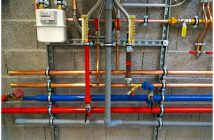Have you ever had an employee say that a task you assigned them is not indicated in their job description? Well, is the task indicated on their job description? Unlikely, because the reality is that a job description is intended to be a snapshot of the role’s responsibilities, not a detailed list of every task that may ever be required of the employee.
Every position in the company should have a job description, even if it is a simple description.
Think of a job description as a guide for your employees. The guide should have the company mission, vision, or company goals if possible. This will set the foundation for employees to know how their job duties impact the company-it creates a sense of loyalty and investment to the overall success of the company.
A job description should be clear and concise and includes pertinent details such as, the informative information, the essential functions of the job, the required and preferred competencies, the work environment, and the physical demands required to do the job.
Informative information: this would include things such as the job title, the supervisor, the department, team, or location, the classification, (exempt or non-exempt), and the status, (full-time or part-time). Other information may include the duration of the job, (if on a temporary basis), and compensation information, (pay grade or compensation level in which the role is placed). If possible, indicate the work hours and schedule expected of the job.
Essential functions: these are the minimum required duties of the job, either in a summary or in a list. I prefer a high-level summary of the job and then indicate in a broad-list format the essential duties of the job. Towards the end of this list, I recommend including the statement, “additional duties and responsibilities may be required to achieve the company goals,” as well as, “required to attend company trainings and meetings as needed.” This will help alleviate the questions and encourage a collaborative approach to every employee actively participating in the company success.
It is ideal to indicate the frequency at which the task or duty is performed, (i.e., weekly, daily, etc.), and indicate the amount of time it may take to accomplish the tasks, (i.e., approximately ten hours per week on administrative tasks such as filing, scanning, emailing, mailing, etc.).
Indicate whether the task/duty is a required essential duty, or a preferred task/duty. This will help if in the future workplace accommodation is requested. With the clarity indicated in the job description, you will be able to confirm what is able to be accommodated versus what may not be accommodated due to the requirements of the job.
Competencies: this is the knowledge, skills, and abilities (KSA’s) required or preferred to do the job. Example: Required-bachelor’s degree in business, prefer an advanced degree, specifically in data analytics. Required- five years of experience in hospitality, prefer two years of supervisory experience. Indicate the required from the preferred.
Work environment: this explains what the work environment is like. Is it in an office, in a warehouse, remote from home, etc.? If temperatures vary based on the season, indicate such. (This applies to certain industries). If travel is a requirement of the job; indicate what that travel looks like, i.e., travel by plane, train, personal automobile, etc. and indicate how often travel may be expected, i.e., travel is expected 25 percent of the time (most travel occurs in the surrounding area and can be done during the workday, one-two days of overnight travel may be required).
Physical demands: this is the physical aspect of the job such as standing, lifting, sitting, bending, etc. It is recommended that you indicate if this requirement is performed often, occasionally, or rarely. The broader the list, and with more detail, the better.
Best-practices: indicate when the most recent revision or review of your active job descriptions occurred, somewhere on the document. I prefer to place this date in the footer of the document in smaller print. Review job descriptions often, ideally on an annual basis. During this review, not only should the overall description be reviewed, but the competencies and physical duties should also be confirmed. It is wise to get feedback from those doing the job, or at a minimum the supervisor of the job. Creating a well-defined, accurate, and realistic job description will be an excellent guide to the employee and their supervisor.
Job descriptions are a valuable tool not only in guiding employees on what is needed from them; but it also serves as a useful tool for performance management and to minimize risks. If an employee is under-performing, a leader can indicate those specific areas as stated in the job description. If an employee is over-achieving, it may be time to assess the job description, or look to other opportunities within the organization where the employee’s talent and skills could be better utilized.
To avoid risks, the physical duties and work environment should be well defined. This will allow the employee to feel confident in their abilities and limitations.
Finally, it is recommended to conduct a companywide Needs Analysis every year to ensure your existing talent meets the needs of the organization, your job descriptions should accurately reflect the duties and requirements; and ensure communication is aligned and consistent with an emphasis on achieving the company goals… bring it back to the roots and you will find yourself pleased with the direction the company goes with clear and well defined job descriptions.





